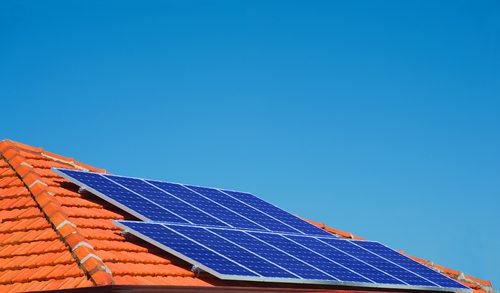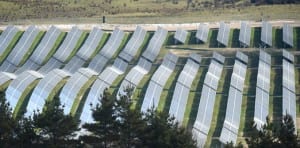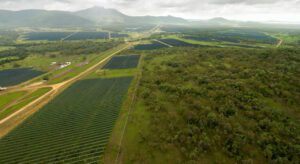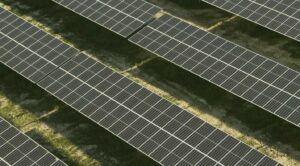The Australian Energy Market Operator has produced a landmark report that, for the first time, recognises rooftop solar PV as a significant source of energy in the National Electricity Market, and includes forecasts that could have a profound impact on the way electricity is consumed and produced – and talked about – in this country.
In a report entitled Rooftop PV Information Paper, AEMO says that up to 18,000MW of solar PV could be installed on Australian rooftops by 2031 – under its high growth scenario – when it could potentially account for around 10 per cent of the electricity produced in the country. Even its medium scenario predicts 12,000MW of rooftop PV.
The forecast by AEMO is the first formal recognition by an Australian energy authority of the potential of rooftop solar in Australia – something that had remained the province of the solar industry itself, as well as a handful of consultants, the Greens, advocacy groups, and web sites such as this.
The report is in marked contrast to the Draft Energy White Paper produced for, and released by, federal energy minister Martin Ferguson last December, which predicted that solar – in all forms, including utility-scale solar PV and solar thermal – would account for less than 3 per cent of Australia’s electricity capacity by 2030, or 2,000MW in all forms.
AEMO has not produced its own percentage estimates, but its top-end forecast suggests that rooftop PV could generate 28,000 gigawatt hours (GWh) of electricity in 2031. That is potentially around 10 per cent of the forecast for the entire eastern Australia grid by that year. In 2011, solar PV accounted for just 0.6 per cent of 196,440GWh produced. (It should be noted that the AEMO forecast is for the National Electricity Market only, so it excludes WA, the Northern Territory, and separate grid areas such as Mt Isa).
And while the Draft Energy White Paper suggested (to the amazement of many) that installations from rooftop PV would effectively cease after the renewable energy target ends in 2030, AEMO says the economics would be so compelling that by 2020 consumers could be getting a 3-4 year payback on solar PV and a 1-2 year payback by 2025. Based on its numbers, if the market does slow down around 2030 it would only be because it had become saturated!
The significance of the AEMO report is several-fold. From a technical point of view, it means that rooftop PV will now be included in its demand forecasts, and in its statement of opportunities – the energy bible that is used as a guide to what opportunities exist for developers who are thinking of building new gas or other generation assets. AEMO will update its demand forecasts by the end of June, and then issue a separate Statement of Opportunities.
Another significant aspect is the potential changes this makes to generation assets. A deployment of the scale being contemplated by AEMO suggests a “merit order” impact on existing generators of some significance. In Germany, where 25GW of solar PV accounts for just 3-4 per cent of the annul electricity production (although more than a third of production on some recent sunny days), the merit order impact is already having an effect to the point where the profits of established generators are being erased and major utilities such as RWE and E.ON are refusing to build new gas-fired generation.
The third impact is on the way energy is consumed at the household level. AEMO’s high forecasts suggest nearly half the households in the country with an available rooftop could be taking up solar PV, and a lot more thinking about it.
This has two implications – it means that households have an option to hedge against what appears to be an inevitable increase in electricity costs (and a sharp one at that), and it could change the political discourse around clean energy and the cost of living, particularly in light of the polemics around the carbon price and green energy schemes in this country. But will any politician be able to seize the moment?
AEMO says there are some physical constraints of networks that could limit the uptake, and this may require extra investment to deal with, and household electricity storage could also play a role.
It is important to note that these forecasts do not include very large commercial-scale rooftop PV installations of more than 100kW, or ground mounted or utility scale plants.
In detail, AEMO expects a modest growth in rooftop PV over the next five years as the industry adjusts to the removal of incentive schemes such as feed-in tariffs. It predicts 320MW a year until 2017.
From 2018 to 2025, however, economic payback is expected to improve strongly, with innovative financing reducing the problem of up-front payment, and commercial buildings joining the trend.
“The moderate uptake scenario sees this accelerate, averaging 620 MW per year, while the rapid uptake scenario forecasts new installations to average 1,130 MW per year. The slow uptake scenario misses out on this phase, suppressed by relatively poor payback,” the report says.
“From 2026 to 2031, payback is expected to improve. Uptake is forecast to continue strongly for newly-built dwellings, and for upgrades or replacements of existing systems. Fresh installations on existing dwellings may start to slow, as the most suitable dwellings have already been taken by earlier installations.”
It notes that PV energy produced in 2011 is 1,200GWh, but by 2020 this could be the monthly generation, depending on where the capacity ends up, and by 2030 it could be double that.
The report’s three uptake scenarios are slow (driven by small electricity price increases and PV price reductions, and no government incentives); moderate (moderate electricity price increases and PV price reductions, and moderate government incentives); and rapid (large electricity price increases and PV price reductions, and significant government incentives).
But as this graph below suggests, the rapid uptake does not fall that far short of predictions made by the likes of Suntech, but is well above the references used by the Draft Energy White paper, many of which relied on prices from 2009/10. Solar PV prices have fallen by nearly half in the last year alone.
In NSW, its medium and high take-up scenarios suggest the amount of solar PV rising from 461MW at the end of February to 4,450MW or nearly 7,000MW by 2031; Queensland jumping from 427MW to 3,530MW or around 5,500MW; Victoria going from 288MW to 2350MW or nearly 4,000MW; and South Australia jumping from 267MW to 1,370MW or around 2,200MW.
Implications including the effect that increased rooftop PV penetration and any cross-subsidy arrangements might have on retail electricity prices have not been analysed.








